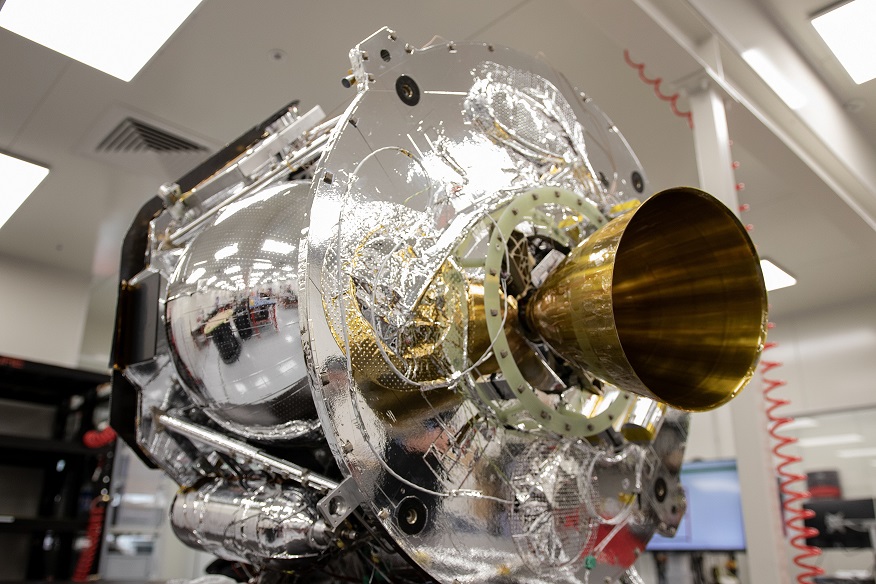30.08.2021

An exciting new Mars mission will seek to answer questions about the Martian atmosphere and the local solar wind environment, in real time.
NASA announced the selection of two spacecraft named “Blue” and “Gold” that will launch in the 2024 Mars window, for arrival at the Red Planet in 2026. The overall mission is named the Escape and Plasma Acceleration and Dynamics Explorers (ESCAPADE) and is led by the Space Sciences Laboratory at the University of California, Berkeley.
Costing only $80 million, ESCAPADE is part of a NASA initiative to produce low-cost, quick-to-assemble interplanetary missions, called the Small Innovative Missions for Planetary Exploration (SIMPLEx) program. For comparison, the development phase of NASA’s MAVEN spacecraft cost $367 million.
“ESCAPADE and two other NASA missions recently approved are experiments to see whether advances in the space industry over the last five to 10 years can translate to a much better bang for the buck in terms of science per dollar,” says Robert Lillis (University of California, Berkeley) in a recent press release. “Sending two spacecraft to Mars for the total cost of $80 million is just unheard of, but current NASA leadership is taking the risk.”
MARS IN STEREO
Once in space, Blue and Gold will separate and cruise in tandem to Mars for orbital insertion. Orbiting on opposing sides of the Red Planet, the two craft will provide the first simultaneous stereo picture of how the solar wind interacts with the planet’s upper atmosphere. Science collected by ESCAPADE could paint a more detailed picture of how Mars lost much of its atmosphere to the solar wind early in its history. Plus, studies of the Martian ionosphere will characterize how it could interfere with future radio communications from the planet's surface.

UC Berkeley/Robert Lillis
ESCAPADE will launch on a Rocket Lab Electron rocket, and the two spacecraft will use a pair of Photon satellite buses sporting a more powerful HyperCurie motor to head to Mars. Rocket Lab has been carrying out successful launches from the company’s Mahia Launch Complex One in New Zealand and is looking to start launching rockets from NASA's Wallops Flight Facility on the Virginia coast late this year. Rocket Lab has other lunar and planetary ambitions in addition to ESCAPADE, including the launch of NASA’s CAPSTONE pathfinder mission in late 2021 for the crewed Artemis Lunar Gateway orbiter set for late 2024, and a possible mission headed to Venusin 2023.

Rocket Lab
To date, Rocket Lab has successfully flown the Photon satellite bus based on the Electron upper kick-stage motor on three test flights in 2020 and 2021. CAPSTONE will be the first operational flight for Photon.
If successful, ESCAPADE could pave the way for other quick, low-cost missions. Other selected SIMPLEx missions that have passed Key Decision Point-C (KDP-C) include Janus, a binary asteroid reconnaissance mission that will fly with NASA’s flagship Psyche mission in 2022, and the Lunar Trailblazer mission which will directly map water on the lunar surface. An original plan called for ESCAPADE to fly on the SpaceX Falcon Heavy launch along with the Psyche mission.
Congrats to the ESCAPADE team on the selection . . . it will be exciting to see the mission head to Mars in 2024.
Quelle: Sky&Telescope
